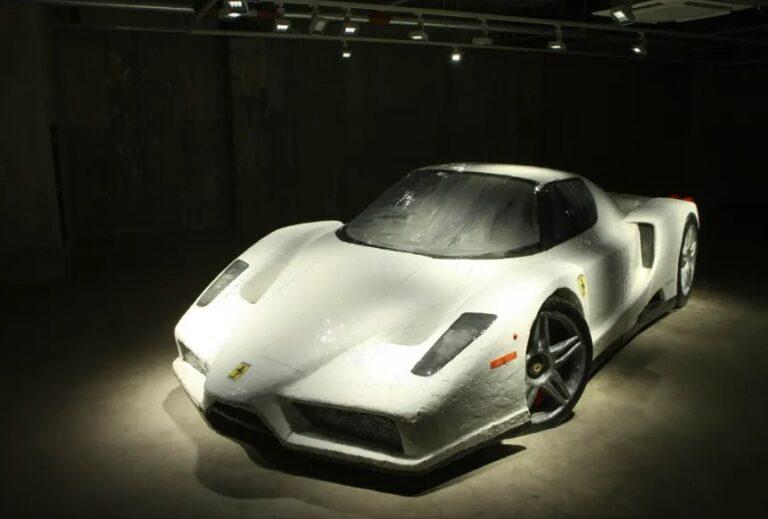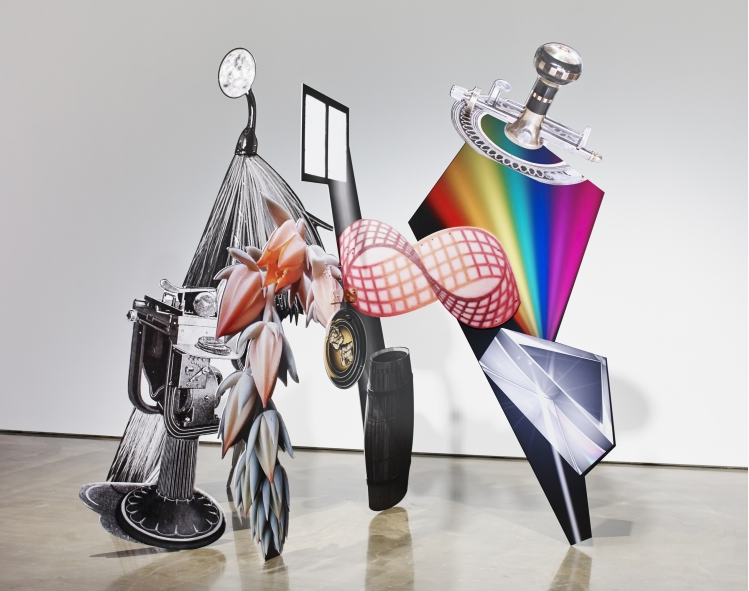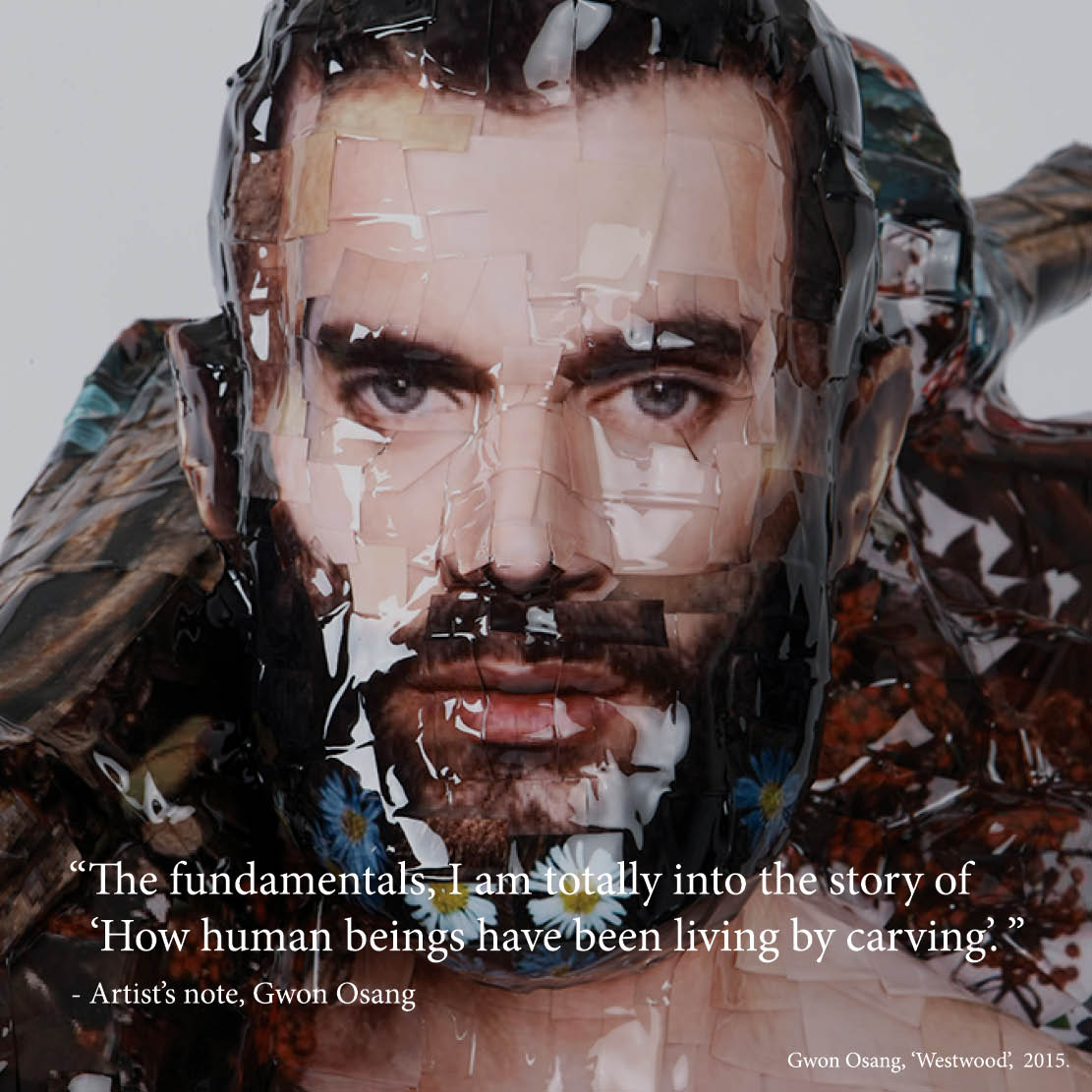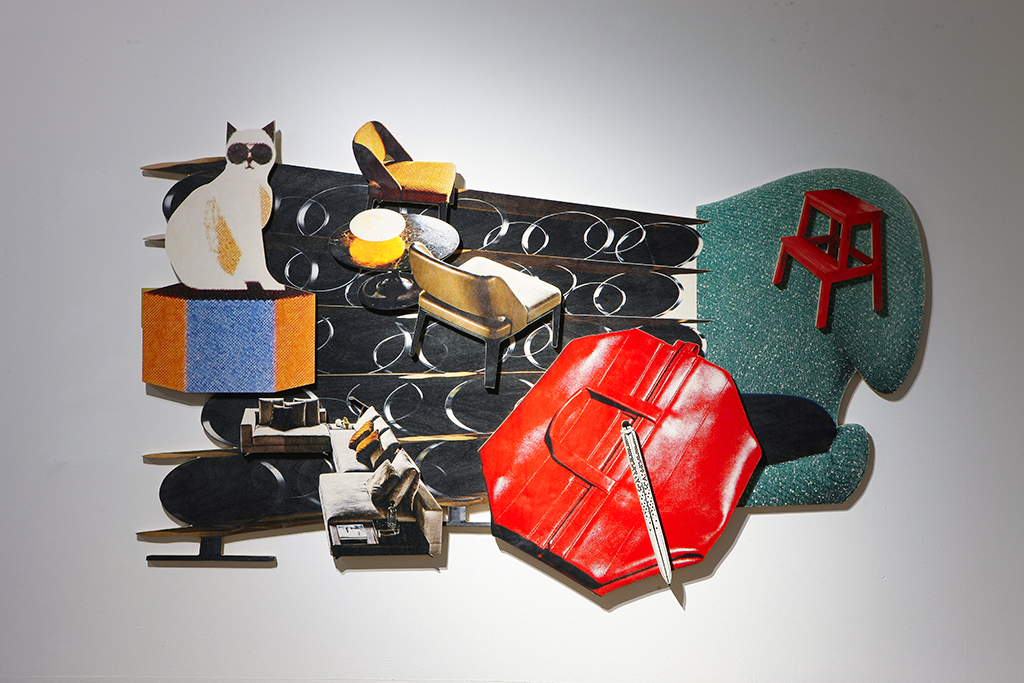 Gwon Osang, 'Untitled GD,' 2015, C-print, mixed media, 70 x 41 x 150 in (176 x 105 x 380 cm). Courtesy of the Artist.
Gwon Osang, 'Untitled GD,' 2015, C-print, mixed media, 70 x 41 x 150 in (176 x 105 x 380 cm). Courtesy of the Artist.Artist Gwon Osang’s Untitled GD will be on view at the Victoria and Albert Museum (V&A) in London from September 24, 2022. The piece depicts G-Dragon, a member of the South Korean idol group Big Bang, as Saint Michael the Archangel, confronting the devil.
In recent years, the globalization of South Korean popular culture, such as movies, television series, and K-pop, has increased global interest in Hallyu, or Korean culture. To meet expectations, London’s V&A has chosen to present Korean popular culture from multiple perspectives in the exhibition Hallyu! The Korean Wave through June 25, 2023.
Gwon’s Untitled GD is a commissioned work by the Seoul Museum of Art’s exhibition PEACEMINUSONE: Beyond the Stage held in 2015. The exhibition featuring G-Dragon’s view of contemporary art has attracted considerable attention from both the K-pop artists’ fandoms and the general public, and unquestionably the show was an opportunity to promote Gwon’s work widely. It is essential to note, however, that Gwon’s artistic practices have long been recognized in the art world for his consideration of transcending sculpture’s limitations.
Gwon is best known for his sculpture works that incorporate photographs and advertising images. His photography-sculpture works were widely recognized for their unique combination of photography and sculpture, two genres that typically do not overlap. Gwon’s work has now expanded to include photography, sculpture, collage, and graphics to contemplate the sculpture genre’s elements and reflects contemporary life.
 Gwon Osang, 'Westwood,' 2015, C-print, Mixed media, 25 x 43.3 x 82.6 in (63 x 110 x 215 cm). Courtesy of the artist.
Gwon Osang, 'Westwood,' 2015, C-print, Mixed media, 25 x 43.3 x 82.6 in (63 x 110 x 215 cm). Courtesy of the artist.'The Deodorant Type', which began in 1998, is the most representative of Gwon’s series. After taking thousands of pictures of a subject, Gwon prints and connects the photographs to recreate them as a three-dimensional sculpture. Untitled GD, which will be exhibited at the V&A Museum, is a continuation of this series. The artist gathered G-Dragon images from the internet and combined them to create a statue. The Deodorant Type series attempts to subvert the weight connotation inherent in conventional sculpture forms.

Gwon Osang, 'The Flat 15,' 2005, Diasec on lightjet print, 70.8 x 90.5 in (180 x 230 cm). Courtesy of the artist.
Later, in The Flat series, Gwon converts the notion of volume into a new perspective. The artist cuts out the outline of advertisement images collected from magazines, places a wire behind the cut-outs to resemble a standing signboard, and then collects these standing images in one place to capture them in a photograph.
In this series, the outcome is a flat photographic work, but it is also a process of studying three-dimensional sculpture. The advertisements, which were originally objects, undergo repeated transformations from two-dimensional to three-dimensional and from commercial products to fine art.
 Gwon Osang, 'The Sculpture 3,' 2005-2015, Acrylic on stoneclay, resin, 47 x 82.5 x 171 in (120 x 210 x 435 cm). Courtesy of the artist.
Gwon Osang, 'The Sculpture 3,' 2005-2015, Acrylic on stoneclay, resin, 47 x 82.5 x 171 in (120 x 210 x 435 cm). Courtesy of the artist.In his later studies, Gwon emphasizes sculpture’s elements in the most traditional way. The Sculpture series takes the shape of supercars, one of the most luxurious objects and an assemblage of the most advanced design and technology. Gwon reconstructs a life-size bronze sculpture of a supercar using images found on the internet and in advertisements and then paints the artwork.
It is difficult to determine what material was used to create the artwork due to the textured surface, which resembles a thick layer of paint. Although visually distinct from the preceding series, The Sculpture series also demonstrates the artist’s consideration of the sculpture genre and the contemporary nature of its subject matter.
 Gwon Osang, 'New Structure 4 Prism & Macallan,' 2014, Inkjet print, aluminum, 108.2 x 77.5 x 124.4 in (275 x 197 x 316 cm). Courtesy of the artist.
Gwon Osang, 'New Structure 4 Prism & Macallan,' 2014, Inkjet print, aluminum, 108.2 x 77.5 x 124.4 in (275 x 197 x 316 cm). Courtesy of the artist.Gwon takes back his work to subvert the elements of space and volume in sculpture through the New Structure series. Instead of capturing the cut-outs in a single photograph, the artist edits and enlarges the images to create a large-scale structure using images from The Flat series and the internet.
The works in the New Structure series are inspired by Alexander Calder, known for his innovative sculpture work. Gwon especially takes Calder’s Stabile series and adopt its structure. The dramatically enlarged size of the advertisement images is intended to balance flatness and volume and reflect today’s consumerism fantasy.
The Relief series examines an art form that combines features of the two-dimensional pictorial arts and three-dimensional sculpture, whereas the Mass Patterns series studies the patterns of sculpture’s mass and volume. Both series are also an extension of the artist’s study of sculpture as well as contemporary consumer culture and materialism.
 Artist Osang Gwon. Courtesy of the artist.
Artist Osang Gwon. Courtesy of the artist.Gwon Osang (b.1974) was deemed a notable artist due to his innovative use of theme, media, and form.
Gwon has been represented by a blue-chip gallery, Arario (Korea), since 2005 and has held solo exhibitions at the Manchester Art Gallery (UK) in 2008 and Ando Fine Art (Germany) in 2011. His works have been presented at internationally renowned galleries such as Kukje Gallery (Korea), Saatchi Gallery (UK), and Arario Gallery (Korea).
Gwon’s works are in the collections of many Korean art institutions, including the National Museum of Modern and Contemporary Art (MMCA), Leeum Museum of Art, Seoul Museum of Art (SeMA), Busan Museum of Art, and Art Sonje Center. His works are also included in various art institutions worldwide, such as the Roberts Institute of Art (UK), the Zabludowicz Collection (UK), the Burger Collection (HK), and the Singapore Art Museum (Singapore).





















